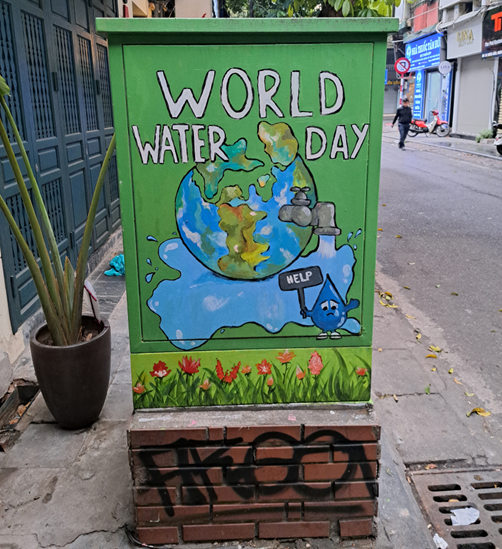Reflections on Ponds: Water Quality monitoring in the Red River Delta Ponds
By James Fielding and Jodie Brown
Join James Fielding and Jodie Brown, as they discuss the critical role of ponds in the Red River Delta of Vietnam and the environmental challenges they face. The traditional management system, known as VAC (Vuon Ao Chuong), integrates ponds with home, garden, livestock, and fish, but environmental degradation due to excess nutrients and pollutants poses a threat. Along with Suzanne McGowan (Netherlands Institute of Ecology), Do Thu Nga and research assistants Trung and Lan from the Electric Power University in Vietnam, James and Jodie measured various chemical parameters and interviewed pond users to gain a holistic understanding. Read on as the authors reflect on the human experience, emphasizing the importance of connecting with the people in the deltas to truly appreciate the significance of their work.
As we descend into Vietnam’s capital Hanoi, the morning light flashes over the countless small river channels and manmade canals, before being lost in the deep sediment rich waters of the Red River. Even more prominent within the region’s famous agriculture are the reflections from the thousands of small water bodies that dot the scenery, from small lakes to paddies and pits dug in gardens; this landscape is dominated by ponds.
Many ponds here are manged traditionally, using the Vuon (garden or orchard) Ao (fishpond) Chuong (pigsty or poultry shed) or VAC system, which is an integration of pond use with the home, garden, livestock, and fish. The ponds are used to raise fish, irrigate crops, and feed animals, while nutrients, as waste, are recycled between these parts of the farm. Other ponds have important social and recreational status as the centres of villages, towns and cities, and a few even have religious significance belonging to ancient temples.
Despite their central role to delta life, reliance on ponds has led to their environmental and ecological degradation. Excess nutrients phosphorus and nitrogen from agriculture and sewage have led to overgrowth of algae and aquatic plants (eutrophication) and cyanobacteria blooms leading to water quality issues, oxygen depletion, and harm to aquatic life. Other toxic metals and compounds have also accumulated and have led to some ponds no longer being functional, with regular fish kill events becoming common. In recent years too, changes in economic demand, urban and industrial expansion, sand and clay mining, and groundwater extraction have led to a shift in pond use and redevelopment.
An interdisciplinary approach
Jodie and Suzanne eager to set sail. (James Fielding)
With this obvious threat to such a key part of the Red River Delta in mind, at the end of March ’23, We travelled to the Red River Delta, to meet with Suzanne McGowan (Netherlands Institute of Ecology), Do Thu Nga and research assistants Trung and Lan (Electric Power University, Vietnam) to carry out pond water quality monitoring, as part of a wider Living Deltas Hub scheme, aiming to assess water pollution in the area and how the environment can be improved.
We measured the water quality in various ponds in and around Hải Dương, Hanoi, and Nam Định, using a range of chemical parameters, including pH, salinity, and nutrient levels (such as nitrogen, phosphorous, and silicon). Additionally, we considered biological factors, like algal pigments and the depth of the photic zone. These ponds varied in their physical characteristics, such as location (urban or rural), depth, surface area, age, as well as their management practices (water source and remediation techniques) and purposes (aquaculture, VAC, ornamental, recreational fishing, irrigation). We also gathered sediment samples from the pond bottoms and analysed them using X-ray fluorescence to detect pollutants like toxic metals.
In addition to our scientific investigations, we interviewed pond users to learn about the history of their ponds and any environmental concerns. Previously, we have relied on replicable time-tested procedures and numbers to tell us the story, but the Living Deltas Hub’s wider reaching focus on the human aspect had persuaded us to capture this, as we would come to see, invaluable source of information. From our very first site we experienced the sincere interest of pond users in what we were doing and the science behind it, along with genuine concern for their environment.
This research is the first ever to combine a physio-chemical analysis of ponds in the Red River Delta, along with interviews of the pond’s users. By undertaking interdisciplinary research, we hope to develop more robust and nuanced explanations providing us with a deeper understanding.
Embarking on our fieldwork
In Hanoi, we tested three sites to the north of the city near the Tranh River and four more just to the south of the main urban area, with the aim of differentiating agricultural sources of pollution (e.g., excess nutrients) vs those form the city (e.g., heavy metals). We also, collected samples from 12 ponds in and around Hải Dương a city to the east of Hanoi where the Red and Duong Rivers split. And in Nam Định we found that ponds and water bodies in and around the city suffer from increasing inland saltwater encroachment. This is because of over extraction of ground water and sediment starvation further upstream leading to coastal erosion in places.
Despite all of the tested ponds generally falling within four prominent use types, each one yielded sometimes surprising individual characteristics. One such location, site 15, a VAC pond with recent fish kills (and an overwhelming smell of death at the shore) had an extensive reed bed filled with diverse insect and bird life. Just across the road at site 14 the enthusiasm to engage us on environmental issues continued with a farmer, who was keen to show us a potentially polluted sediment recently deposited in a flood and hidden by shallow water.
Following a brief detour to the stunning Xuan Thuy National Park we saw first-hand the colossal efforts that the Vietnamese government are undertaking to protect the receding coastline just to the south of the park. We drove along miles of freshly moved grey and red/brown sand and silt piled in banks with foreboding concrete sea defences.
Trung conducts the survey at site 15. (James Fielding)
Our ever-enthusiastic pond owners make sure this VAC pond is cow free before sampling. (James Fielding)
Final thoughts
Artwork in Hanoi old town (James Fielding)
While conducting this work we’ve done something we don’t often do as environmental chemists; reflect on the human experience. I have found that it is all too easy to become disconnected from the sites we work on. The names, faces and place become lost in a huge excel spreadsheets of chemical quantities and Latin taxa names. It becomes all too easy to generalise; ‘site 12 another dirty polluted pond’ and not think about the who and why. I’m ashamed to admit it has led me to a further generalisation that people in deltas might not care about their environment. This is easily dispelled when you see people working through the night to save their coast, or when you meet farmers who are so eager to not just share food and that seventh cup of tea, but their knowledge and experiences of their family’s pond and wildlife.
Being lucky enough to take the samples ourselves and, more importantly, engage with our pond users has made it not only possible to understand the numbers we have generated better, but to see the importance of our work in the deltas to the people it matters to the most.
Find out more about our work on ponds across the deltas




